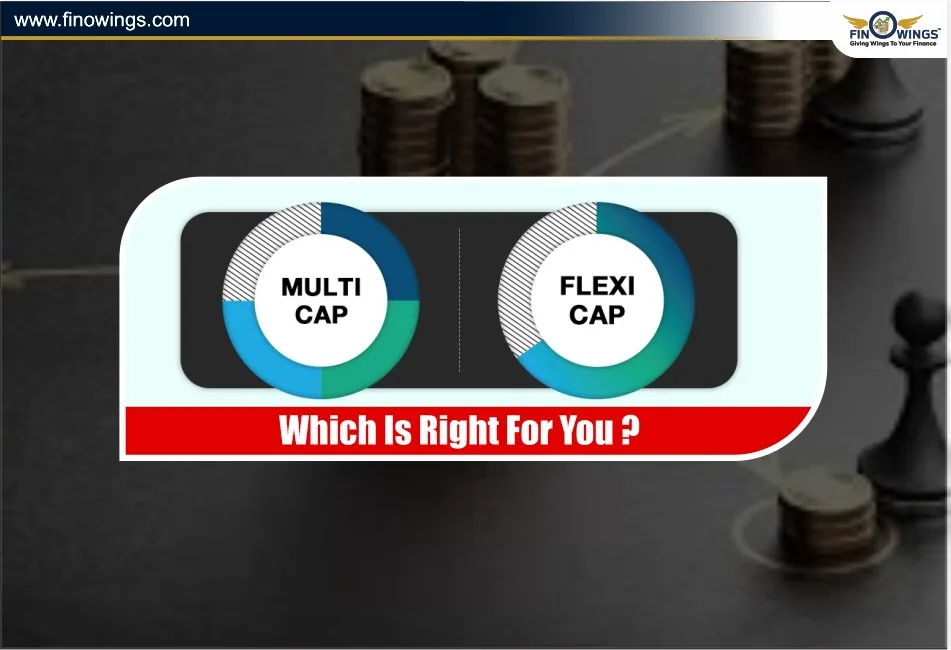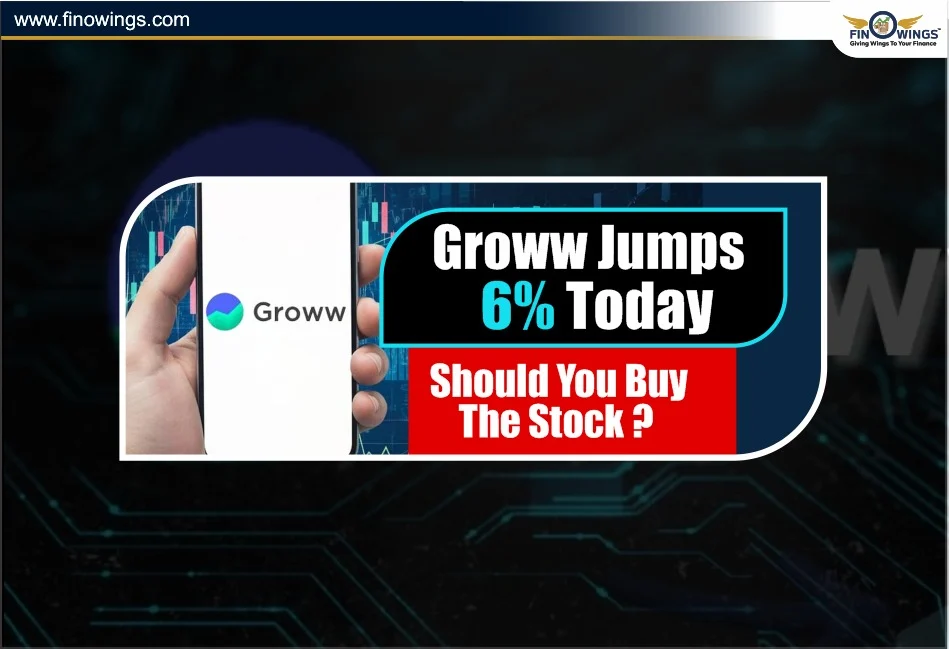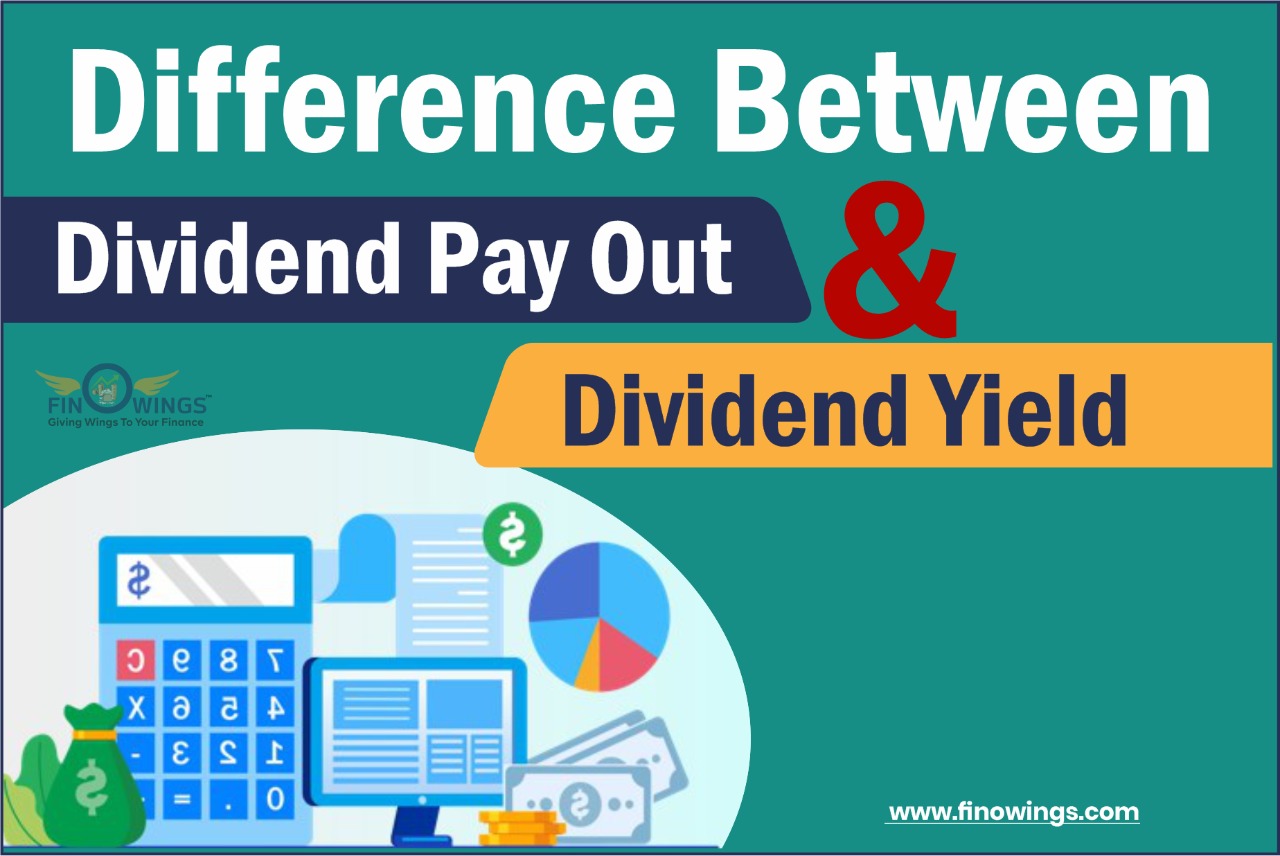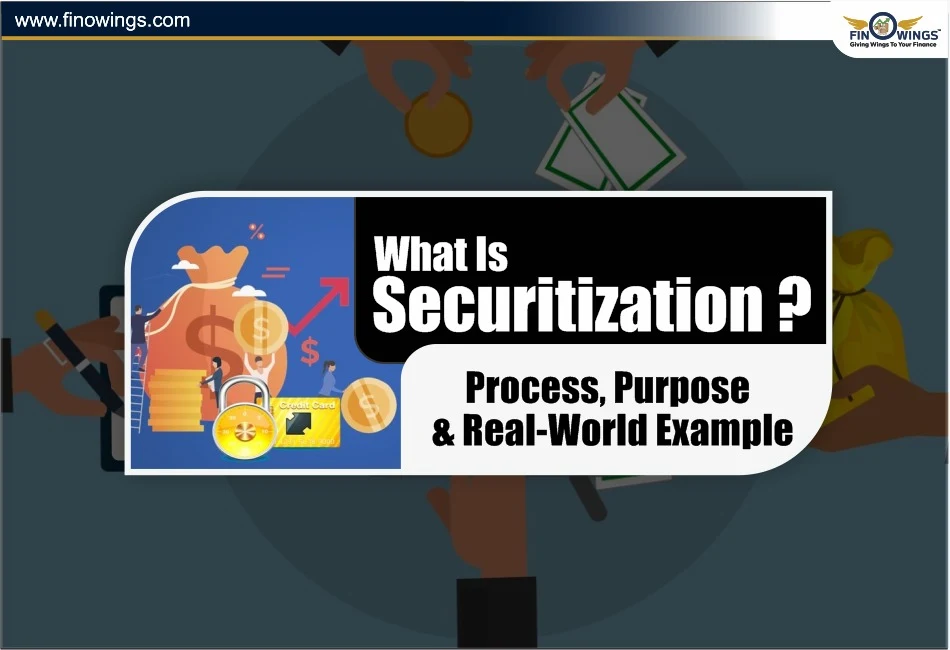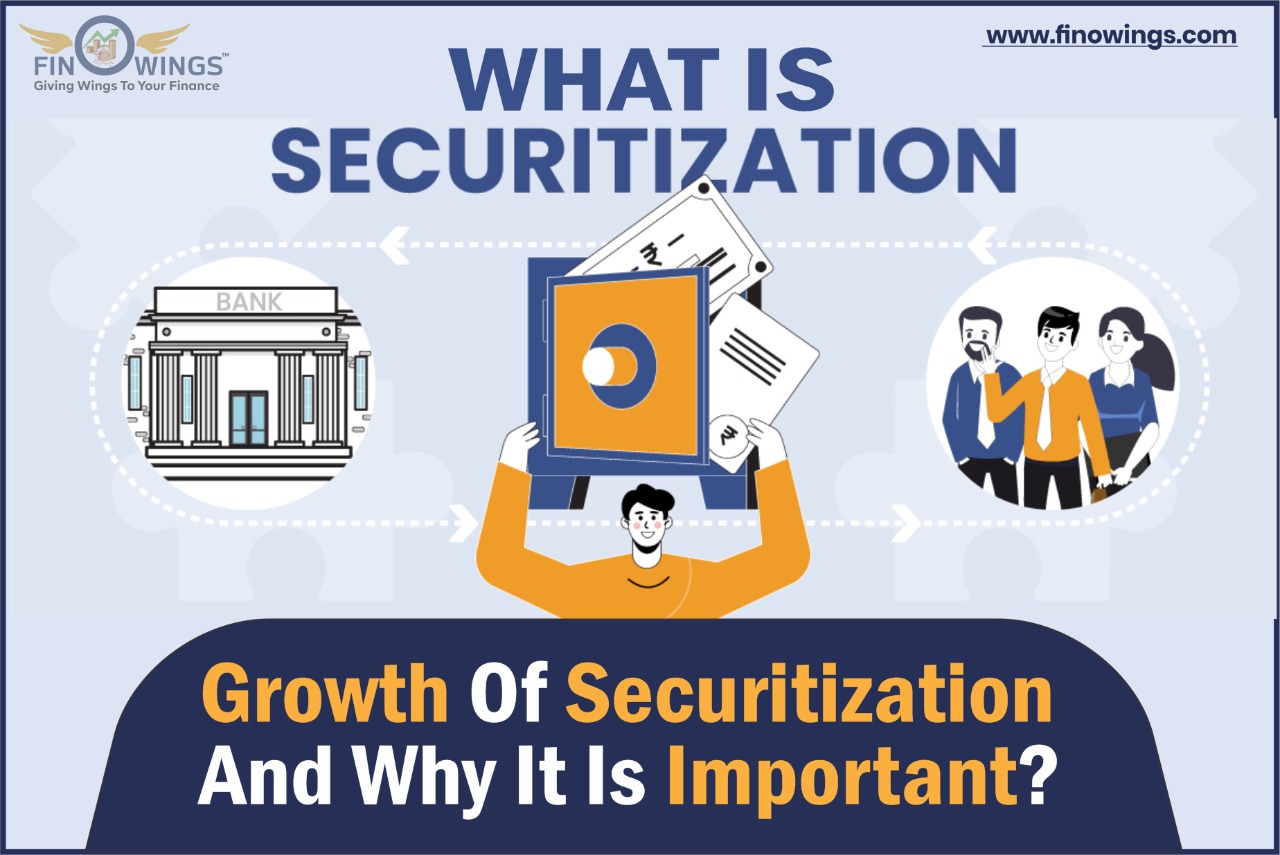Home >> Blog >> EMI vs Personal Loan: Debt Consolidation Guide
EMI vs Personal Loan: Debt Consolidation Guide
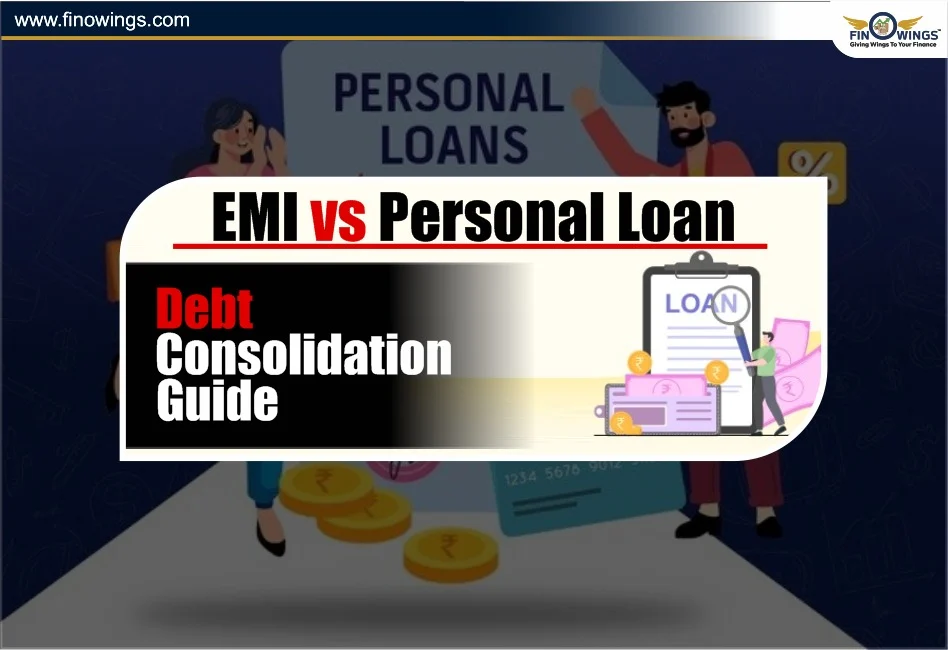
Table of Contents
- What is an EMI?
- What is a Personal Loan for Debt Consolidation?
- What are the Differences between EMI and Personal Loans
- When Should You Continue Paying EMIs?
- When Do You Need a Personal Loan for Debt Consolidation
- Steps to Consolidating Your Debt with a Personal Loan
- Using an EMI Calculator for Decision Making
- Advantages of Debt Consolidation Using a Personal Loan
- Things to be cautious of when taking a personal loan
- EMI vs Personal Loan: Which is Better?
- Conclusion
Debt has become a common part of everyday life these days due to credit cards, EMIs, BNPL apps, and other forms of personal loans. When debts start to pile up, though, it can be difficult to manage. That is why debt consolidation is used to combine all of your high-interest loans into one easy-to-manage payment. This is the strategy many borrowers tend to focus on.
To be as helpful as possible, let’s focus on the most common forms of consolidation and the one that most people get the most confused about: EMI vs Personal Loan. Should you continue to pay multiple EMIs? Should you take a personal loan to pay off all your other loans? Which one is cheaper? Which one will help you improve your credit score?
This guide will help you make the best decision for you, as it compares many factors and helps you look at the full scope of the situation, including calculating your repayments through an EMI Calculator.
What is an EMI?
EMI stands for Equated Monthly Instalment, which refers to the monthly payment to be paid for a particular loan. This payment will consist of the Principal amount and the Interest amount.
Some of the loans for which you pay EMIs include:
-
EMIs for phones or gadgets.
-
Personal loans.
-
Home or car loans.
-
Consumer durable loans.
-
BNPL loans.
-
Credit card convert-to-EMI purchases.
As the number of loans you pay monthly (EMI) increases, it can become hard to manage. This is the part where debt consolidation can be useful.
What is a Personal Loan for Debt Consolidation?
A personal loan service is an unsecured loan available for you to consolidate debt. With this feature for a single personal loan EMI, you can pay off:-
-
Small loan dues.
-
Small EMIs.
-
Overdue BNPL loans.
-
Pending dues from lending apps.
-
High-interest credit card bills.
-
Other multiple small dues.
Then, once the new personal loan is issued to pay off all the other credit obligations to vendors, what is left is to manage just 1 EMI each month.
What are the Differences between EMI and Personal Loans
The following table gives the essential features of EMI and Personal Loans.
|
Feature |
Multiple EMIs |
One Personal Loan EMI |
|
Number of payments |
Many |
Only one |
|
Interest rate |
Usually high |
Usually lower |
|
Credit score impact |
Harder to manage |
Easier to maintain |
|
Debt management |
Complex |
Simple |
|
Cash flow |
Tight & uncertain |
Predictable |
|
Stress level |
High |
Low |
When Should You Continue Paying EMIs?
-
EMIs are okay when the following scenarios are when your EMIs are still okay when low interest is applicable. You are likely paying:
-
EMI on a home loan.
-
EMI on a car.
-
EMI of a BNPL that has a low-interest rate.
-
You are close to finishing all your EMIs.
-
No EMIs will still be there for more than 2 to 3 months. No need for a loan consolidation.
-
Not more than 1 to 2 EMIs are present
-
Taking more credit will not be worth the amount of these small debts to be paid.
When Do You Need a Personal Loan for Debt Consolidation
There are a few scenarios when taking out a personal loan makes the most financial sense:
1. Paying a lot of interest on your credit card
Credit cards charge 30% to 42% interest on credit. Personal loans only cost 11% to 18%. That's a big difference!
2. You have multiple small EMIs.
The more EMIs you have, the more chance you will miss one.
3. Your monthly cash flow payments are tight.
A longer personal loan tenure will lessen your monthly burden.
4. You want to raise your credit score.
It is much easier to manage one personal loan than 6 or 7 small EMIs.
5. You want to have peace of mind.
One EMI versus multiple EMIs will help you have less stress.
Steps to Consolidating Your Debt with a Personal Loan
Debt consolidation is a personal loan offered by a bank or financial institution.
Step 1: Create a list of all the loans you have
Compile a list of all your loans so you can see the total outstanding payment for each loan. Add your credit cards, loans, buy now pay later loans, and overdue payments.
Step 2: Compare interest rates
Check new loan EMIs and the total interest savings from the personal loan via an EMI calculator. Make sure the total EMI for each loan really adds up to the savings with a total loan cost.
Step 3: Apply for the personal loan
Choose the bank or NBFC that offers you the lowest interest rate loan.
Step 4: Take the loan amount and pay off all your debts
Immediately pay off all of your high-cost loans.
Step 5: There are multiple personal loans but pay one EMI only
This way your budget is going to be clean and predictable.
Using an EMI Calculator for Decision Making
This will allow you to compare the total monthly EMIs of all your debts with the new personal loan EMI and the interest you are currently paying, compared to the interest you will be paying after debt consolidation. You will be able to find the ideal tenure with the lowest monthly burden.
Example:
Let's say the total monthly EMIs of all your debts is ₹22,000 and you take a personal loan with EMI set to ₹14,000. That means you save ₹8,000 which is great for your cash flow.
Advantages of Debt Consolidation Using a Personal Loan
1. Reduced Interest Cost
Paying off high-interest debts results in closing multiple loans.
2. One EMI Convenience
With one single EMI, budgeting and financial management become so much easier.
3. Lesser Outflow
This helps in easier management of your monthly expenses.
4. Positive Credit Health
Timely repayments of a personal loan help to maintain a better score.
5. Less Stress
Improved mental health can come from a balanced, simplified financial situation.
Things to be cautious of when taking a personal loan
1. Greater Tenure = More Interest - When looking at a personal loan, some people may feel that a lower EMI is going to be a cheaper loan, but that isn't the case.
2. Processing Fees - There could be additional charges of 1-3% from some lenders.
3. Importance of Discipline - Do not take new loans after consolidation; otherwise, it won’t work.
4. Risk of Overspending - Make sure to avoid the same mistakes after clearing your old credit cards.
EMI vs Personal Loan: Which is Better?
|
Choose EMIs if- |
Choose a Personal Loan if- |
|
Interest rates are realistically low. |
You have a large amount of credit card debt. |
|
EMIs are close to the end. |
You have too many EMIs already. |
|
You have 1-2 loans only. |
You have difficulty keeping up with monthly payments. |
|
- |
Your primary goal is improving your credit score. |
|
- |
You want more stability in your finances. |
A personal loan is more often preferable for debt consolidation for people with multiple high-interest loans.
Conclusion
Today’s world runs on the concept of debt, and therefore the comparison of EMI vs Personal Loan is most relevant and important when managing multiple debts. Personal loans become a better option when the EMIs are large, and the interest is high as they allow lower overall cost, easy management, better cash flow and faster credit score improvement
Always use an EMI Calculator to help choose the better option to compare the scenarios. Smart planning will help you have a debt-free tomorrow, and you will have the confidence and clarity to understand the process better.
DISCLAIMER: This blog is NOT any buy or sell recommendation. No investment or trading advice is given. The content is purely for educational and information purposes only. Always consult your eligible financial advisor for investment-related decisions.
Author
Frequently Asked Questions
An EMI is the fixed monthly payment you make toward a loan, while a personal loan is the actual borrowing tool used to consolidate multiple debts. In debt consolidation, you take one personal loan and repay it through a single EMI.
Yes. A personal loan can be ideal for debt consolidation if it offers a lower interest rate than your existing debts. It helps combine multiple credit card bills, EMIs, and high-interest borrowings into one manageable monthly EMI.
EMI calculation affects your total outflow—lower EMIs mean longer tenure and higher interest, while higher EMIs reduce tenure and total cost. Using an EMI calculator helps find the most affordable repayment structure.
You should compare interest rates, loan tenure, EMI affordability, processing fees, prepayment charges, and your credit score. These factors determine whether the consolidation loan truly reduces your overall debt burden.
Yes. Consolidating debt into one personal loan can improve your credit score by reducing credit card utilisation and ensuring timely EMI payments, leading to a stronger repayment history.






